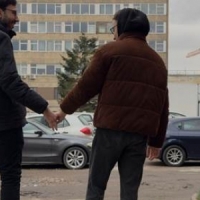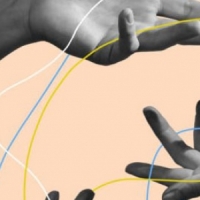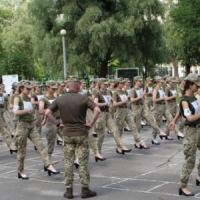World Economic Forum (2018). Insight report: The Global Gender Gap Report 2018
According to the Global Gender Gap Index, Ukraine is ranked 65 out of 149 countries, reaching a score of 0.708 which is well above the global average. Of 26 countries in Eastern Europe and Central Asia, Ukraine is ranked as number 15. Ukraine may have narrowed its gender gap in estimated earned income and legislators, senior officials and managers, but other countries are improving at a higher pace. For instance, Macedonia FYR significantly improved in women’s representation in parliament and Montenegro significantly narrowed its gender gaps in terms of both health and economic participation and opportunity. The Gender Gap Index is composed of four sub-indexes. Ukraine was rated as number 26 out of 149 in educational attainment, 28 in economic participation and opportunity, 56 in health and survival and 105 in political empowerment. In all four sub-indexes, Ukraine had a better ranking in 2006. Most noteworthily, Ukraine went from being number 1/115 to number 56/149 in terms of health and survival. If interested in more statistics on the Ukrainian gender gap, go to pp. 281-288 in the report for tables with contextual Ukrainian data, nuancing the sub-indexes above.
Freedomhouse.org (2020). Ukraine. [online] Available at: https://freedomhouse.org/country/ukraine/freedom-world/2020 [Accessed 20 Apr. 2020]
Based on several indicators such as freedom of speech, freedom of movement, etc., Freedom House offers an overall evaluation of the degree of freedom in Ukraine as of 2019. The evaluation points to several discriminatory practices towards women and minority groups, leaving Ukraine with an aggregate freedom score of 60/100. Constitutionally, gender discrimination is explicitly banned, but in practice discrimination against the Roma minority and LGBT-people is extensive, for instance by employers and police. Furthermore, same-sex marriages are not recognized in Ukraine. Due to social discrimination, LGBT people’s ability to engage in political and electoral processes is limited. Officially, Ukraine has freedom of assembly if demonstrations are announced in advance. Yet the state mostly doesn’t provide sufficient security for demonstrators. Therefore, violence from non-state actors often prevent women’s movements and LGBT-groups from holding events. Allegedly, intrusive and aggressive counter protesters are not only allowed to be present during demonstrations, their agenda may be enhanced and helped along by police officers. Unsatisfactory police intervention is also seen in the limited response to reports of domestic violence. Furthermore, attacks on journalists, minority groups and LGBT-people are in many cases not followed by an adequate prosecution. Women and members of minority groups have the right to vote in Ukraine. Yet internal displacement and illiteracy lower the representation of these groups. By law, 30 percent of listed members in a party must be women. In practice, this is not the case. Ukrainian women, especially amongst internally displaced people, are vulnerable to exploitation for sex trafficking and forced labour in- and outside of Ukraine.
UNDP (2019). Comparative Gender Profile of Ukraine 2018-2019. [online] Available at: http://www.ua.undp.org/content/ukraine/en/home/gender-equality/comparative-gender-profile-of-ukraine-.html [Accessed 10 Sep. 2019]
This article from the United Nations Development Programme presents several statistics concerning gender inequality in Ukraine. As of 2017, Ukraine was rated as number 61 out of 160 countries in the Gender Inequality Index. The article stresses that women earn 21.2 percent less than men in monthly salaries. Based on data from 2017, 12.3 percent of seats in parliament were held by women. The percentage of female deputies in local municipalities is slightly higher. 46.9 percent of women and 63 percent of men form part of the labour force. Yet women spend about twice as many hours on household activities and childcare as men. Domestic violence is widespread, and in 90 percent of all cases the violence affects women. More than one fifth of women aged 15-49 have experienced at least one form of physical or sexual violence in their lifetime. For Ukrainians, the life expectancy at birth is significantly higher for women (77 years) than for men (67 years). Furthermore, men are more likely to commit suicide than women. Per 100,000 people, the suicide rate for men is 28.7, whereas it is 6.2 for women.
Equal Measures 2030 (2019). Harnessing the power of data for gender equality. Introducing the 2019 EM2030 SDG Gender Index
The SDG Gender Index seeks to show the gender aspect of each of the 17 Sustainable Development Goals. It thus measures gender inequality in relation to energy, pollution, poverty, etc. In 2019, Ukraine has a score of 71.0 on the SDG Gender Index and is ranked as number 46 out of 129 countries, just after Kazakhstan. The Ukrainian data shows that gender inequality is particularly prevalent in five of the goals: SDG 9 (industry, innovation and infrastructure), SDG11 (sustainable cities and communities), SDG13 (climate action), SDG16 (peace, justice and strong institutions), SDG17 (partnerships for the goals). Ukraine has a high degree of gender equality within SDG4 (quality education).
Melnyk Т. М. (2012). Creating the Society of Gender Equality: International Experience. Laws of Foreign Countries on Gender Equality
This report aims to find meaningful policy solutions that enhance gender parity in Ukraine by drawing on international legislative models. Melnyk argues that the full international body of knowledge on national, regional and global level is needed to reach the full potential of gender equality across countries. On pages 243-251, there is an English translation of the Act of Ukraine from 8th of September 2005 (№ 2866-IV) on the Provision of Equal Rights and Opportunities for Women and Men. This serves as a starting point for becoming familiar with gender legislation in Ukraine.
Koriukalov, M. (2014). Gender Policy and Institutional Mechanisms of its Implementation in Ukraine: National review of Ukraine’s implementation of the Beijing Declaration and Platform for Action and the outcomes of the twenty-third special session of the General Assembly
The Beijing Declaration and Platform for Action, which was adopted by Ukraine in 1995, has empowerment of women as its agenda. This report assesses the current state of women’s empowerment in Ukraine and explores the possibilities of successful implementation of the Beijing Declaration within an array of themes, such as economy, education, health, gender-based violence, labour market, family issues, power and decision-making, media, environment and the girl child. The report thus gives a broad introduction to the state of gender affairs in Ukraine.




















